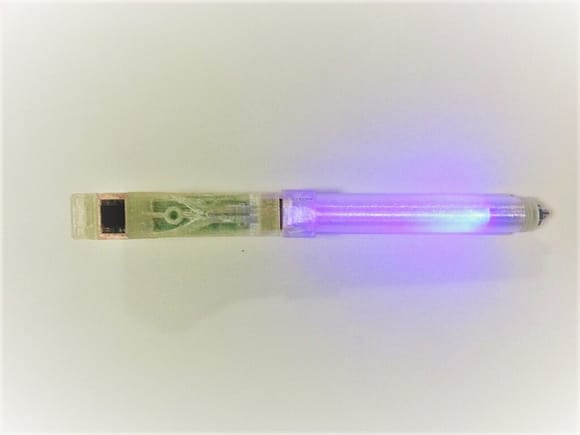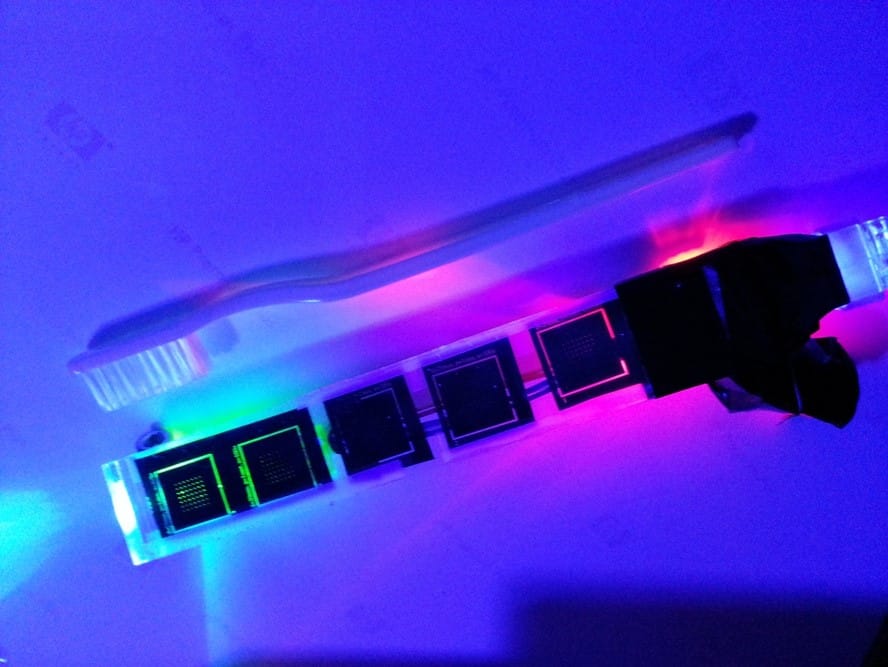This research investigates the viability of subsurface imaging of the teeth and gums as a possible metric for quantifying blood flow, oxygen levels, bone density, and general health of vital nerves, pulp and dentine, by measuring both scattering reflectance and transmission through the media. A special emphasis will be given to subsurface dental Caries identification without use of X-ray and oral cancers. Coupling of IR emitters and novel sensor technologies may reveal early detection of Caries both above and below the gum line, as well as reveal calcification of structures associated with the roots, enamel and dentine which may prove as significant markers for gastric and muscular disorders. A further investigation will utilize UV illumination to identify surface targets for subsequent subsurface scanning of the entire oral cavity in addition to the teeth, gums, soft and hard palate for the early identification and quantification of pre-cancerous ulcers and bacterial fluorescence.

Dental professionals primarily rely on subjective interpretation of a visual examination of the mouth and teeth with probing, coupled with radiography techniques such as the bitewing for the detection and assessment of dental caries (cavities). Approximal caries in dentine have a high specificity to sound densities when probed, however quantification and mapping over time cannot be achieved across broad populations due to infrequent screenings for the development and prevention of early cavity states. This research aims toward developing a suite of non-invasive imaging tools for consumer use for real time feedback and prediction of oral health and hygiene.
The immediate need for new instrumentation to detect, evaluate and quantify the early manifestation of oral diseases is critical in addressing a dramatically under-served global population. Tools such as these could empower health workers with a portable easy-to-use tool that provides accurate and quantitative data allowing for the first wide spread informed diagnosis across large populations.
Processing methodologies:
- Depth information
- 3D reconstruction
- registration
- segmentation
- multi-spectral
- Hyperspectral
